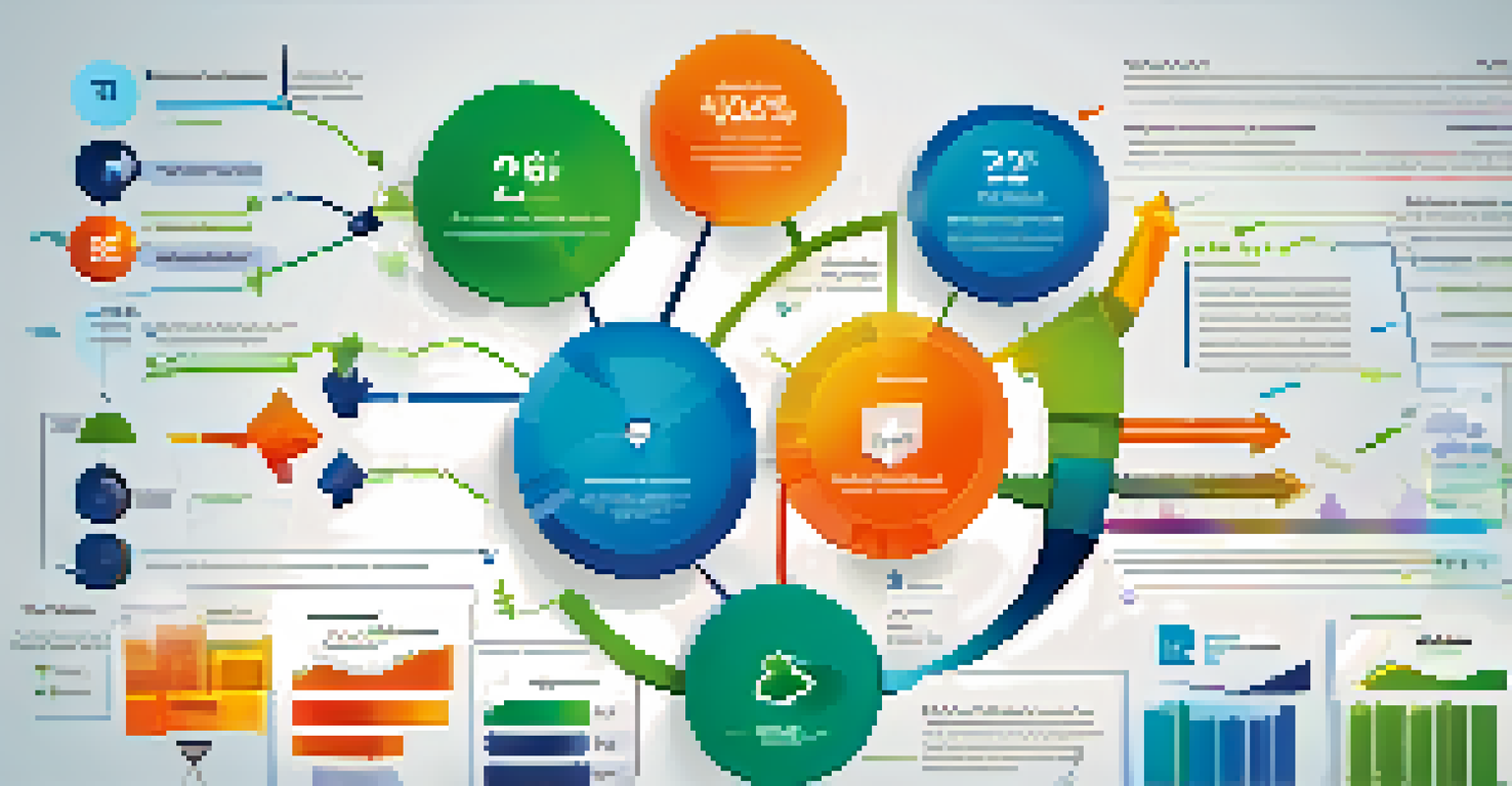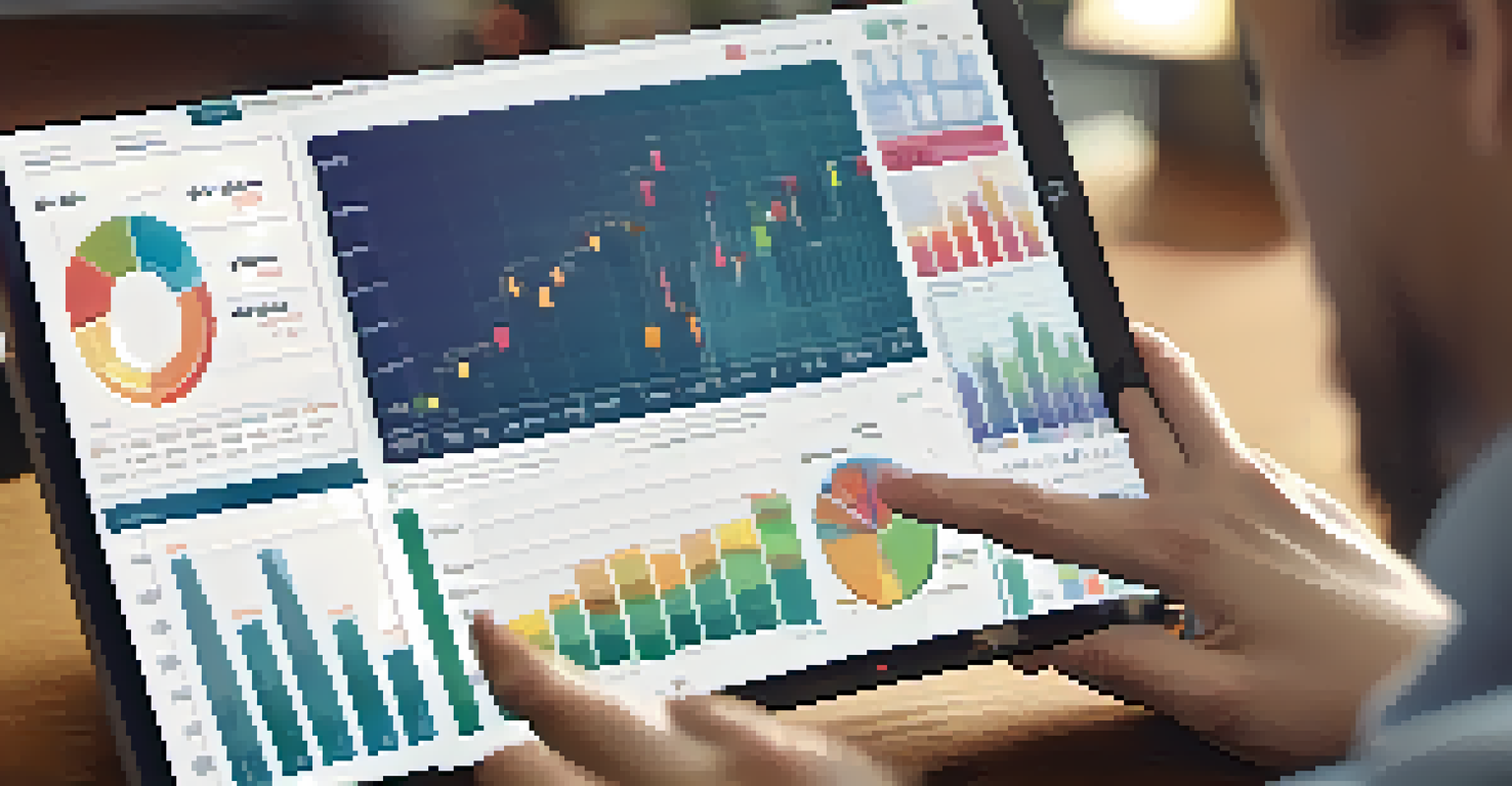How to Use Historical Data for Predictive Analytics Success

Understanding Predictive Analytics and Its Importance
Predictive analytics is a branch of advanced analytics that uses historical data, statistical algorithms, and machine learning techniques to identify the likelihood of future outcomes. Think of it as looking into a crystal ball, but one that's based on real data rather than mystical forces. This approach helps businesses make informed decisions and prepare for potential challenges.
Without data, you’re just another person with an opinion.
One of the key reasons predictive analytics is gaining traction across various industries is its ability to turn raw data into actionable insights. Companies can foresee trends, anticipate customer behavior, and optimize operations, all of which lead to a competitive edge. For instance, retailers can predict which products will be in demand based on past sales data, allowing them to manage inventory effectively.
In short, leveraging predictive analytics not only enhances decision-making processes but also fosters a proactive approach to business. By understanding historical patterns, organizations can navigate the complexities of the future with greater confidence and clarity.
Collecting Quality Historical Data: The Foundation
The first step in successfully using historical data for predictive analytics is collecting quality data. Quality data can be likened to the ingredients in a recipe; without the right elements, you won't get the desired outcome. Organizations must ensure they gather data that is accurate, comprehensive, and relevant to the questions they seek to answer.

Data can come from various sources, including internal systems, customer interactions, market research, and even social media. Each source provides unique insights that can enrich the analysis. For example, a company might analyze customer purchase histories alongside social media trends to understand buying behaviors more holistically.
Predictive Analytics Transforms Business
By leveraging historical data and statistical methods, predictive analytics enables businesses to anticipate trends and make informed decisions.
It's also essential to clean and preprocess the data to eliminate inaccuracies and inconsistencies. Just as you wouldn’t bake with spoiled ingredients, using flawed data can lead to misleading conclusions. A solid foundation of quality historical data sets the stage for effective predictive analytics.
Identifying Key Variables for Analysis
Once you have quality historical data, the next step is to identify the key variables that will drive your predictive model. These variables, or features, are like the gears in a machine; each one plays a crucial role in ensuring everything runs smoothly. Understanding which factors influence your outcomes is vital for building effective predictive models.
The goal is to turn data into information, and information into insight.
For example, if you're predicting customer churn, key variables might include customer demographics, purchase frequency, and customer service interactions. By pinpointing the right variables, you can create more accurate models that reflect the complexities of real-world scenarios. This process often involves statistical analysis and domain expertise.
Additionally, it’s helpful to consider external factors that may influence your predictions, such as economic conditions or industry trends. By taking a holistic view of the relevant variables, you enhance the robustness of your predictive analytics efforts.
Choosing the Right Predictive Analytics Techniques
With key variables in hand, the next step is to choose the right predictive analytics techniques. There are numerous methods available, ranging from simple linear regression to more complex machine learning algorithms. Think of it as selecting the right tool for a job; the right technique can make all the difference in the outcome.
For instance, if you're working with a limited dataset, simpler models like logistic regression might suffice. However, if you’re dealing with vast amounts of data and intricate relationships, machine learning techniques such as decision trees or neural networks could be more appropriate. Each method has its strengths and weaknesses, so understanding the context of your data is crucial.
Quality Data is Crucial
Collecting accurate and comprehensive historical data is essential for effective predictive analytics, as flawed data can lead to misleading insights.
Ultimately, the choice of technique will depend on the specific goals of your predictive analytics project. It's also wise to experiment with multiple techniques to see which yields the best results.
Building and Validating Predictive Models
Once you've selected your techniques, it's time to build your predictive models. This phase is akin to constructing a house; you need a solid blueprint and materials to ensure stability. During this step, you'll train your model on historical data to help it learn patterns and relationships.
Validation is a critical component of this process. It involves testing your model on a separate dataset to see how well it performs. This step is essential to ensure that your model generalizes well to new data rather than just memorizing the training data—think of it as a dress rehearsal before the big show.
By validating your model, you can fine-tune its parameters and improve accuracy. This iterative process is key to achieving reliable predictive analytics, ultimately leading to better insights and decision-making.
Interpreting and Communicating Insights Effectively
After building and validating your model, the next challenge is interpreting and communicating the insights effectively. Data can be complex, and translating those findings into clear, actionable recommendations is vital for stakeholders. This is where storytelling comes into play; you want to present your data in a way that resonates with your audience.
Using visualizations, such as charts or graphs, can help make the data more digestible. For instance, a simple line graph showing sales trends over time can convey a lot more than just a spreadsheet full of numbers. By highlighting key insights, you can guide decision-makers toward informed actions.
Continuous Improvement is Key
Regularly reviewing and refining predictive models based on actual outcomes ensures that analytics efforts remain relevant and effective over time.
Moreover, it's essential to provide context around your findings. Explain how historical data informed your predictions and what external factors might impact future outcomes. This comprehensive approach not only enhances understanding but also builds trust in your analytics.
Continuous Improvement: Learning from Outcomes
The journey of predictive analytics doesn't end once you've made your predictions; it’s a continuous process of improvement. Just as a gardener tends to their plants, regularly reviewing and refining your models based on actual outcomes is crucial. This practice of learning from outcomes can help adjust strategies and improve future predictions.
By comparing predictions against actual results, you can identify areas for enhancement. This could involve tweaking your models, revisiting your data sources, or even adjusting the key variables you initially identified. For example, if a predicted trend didn’t materialize, it might indicate that you need to reconsider certain assumptions.

Ultimately, embracing a mindset of continuous improvement ensures that your predictive analytics efforts remain relevant and effective, adapting to the ever-changing landscape of your industry.